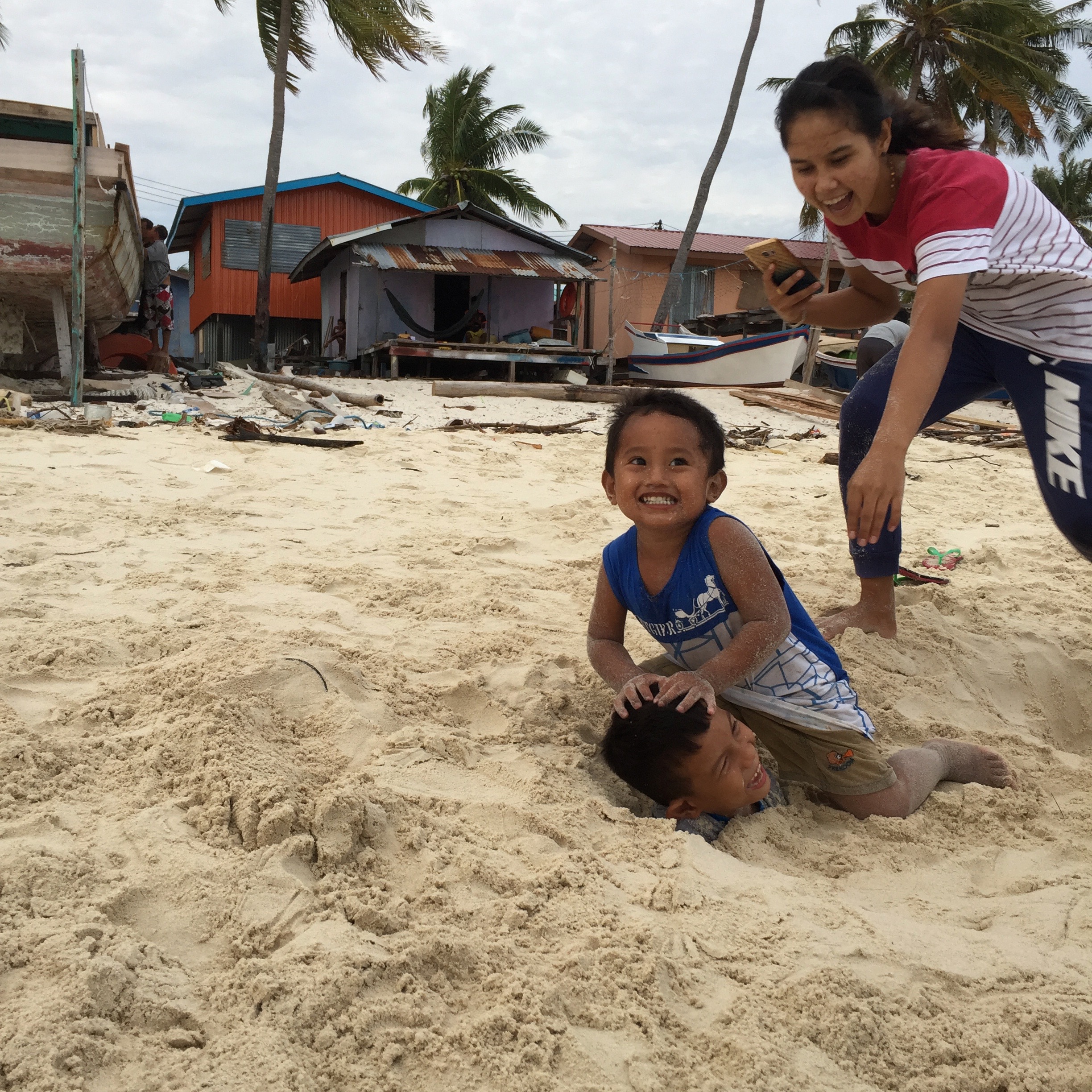This photo was taken last summer, I traveled to an island in Malaysia, called the Mermaid Island. There is a small population living on this island and they are from the Philippines. Majority of them do not have identification, being indigenous refugees. Every day a certain amount of tourist will visit this island. The economic and sustainability of this island depends on the tourist they have every day. The mainland is 3 hours away. As I was walking around the island, I saw these two boys having fun in the sand while a lady standing near them with a phone on her hand watching them having fun and sharing the happy moment. As I look at this photo, I can feel the warm sand, breezy air and the sound of laughter of the boys. It is a happy feeling.
In this photo, one of the boy’s body is buried in the sand and the other boy is trying to push his head while the young lady is trying to stop the little boy. The background of the image, two-man is standing beside the boat, wooden and steel frames houses, coconut trees and trash on the sand. We can see the environment that shapes the society, the social condition for the boys to grow up. Using the method of semiology and psychoanalyze to analyze this photo. The sign of happiness from these two boys.“Since photographs carry a great deal of information, they are ‘an opportunity to gain not just more but different insights into social phenomena, which research methods relying on oral, aural or written data cannot provide.’”(Rose 315). As we can see from this photo, the lady is wearing a Nike sweatpants, she probably is not aware the social status of that brand since they do not have contact to the social media world, or not influenced by it like we do.
The social context that can be analyzed from this photo is the two boys on how carefree they look, the wide smile, dirty fingers, bare feet. Since they live in a closed up society where there is no contact to the ‘outside world’, the society norm can’t be applied here. I also wonder how the tourist uses their social lense to view this living condition. I would think that there are so many ways we can help them to improve their living condition from the perceptions of the developing world, but do they need it? Or it is just us? We putting our social standards into their society. In that island, I hardly see any women outside, usually men. If we want to work the social change for this society, where should we start? From our perspective of better education or family planning, instead of listening and understanding what kind of needs suits them. Besides that, there is gender stereotype to be seen here, that is women is to be at home to do chores and men will do the labor work outside like fisherman or business. Besides that, I feel that the boys are content with their living condition, having a great childhood life. In our society, children should be in certain standards to fit into society like a certain age a child should be in kindergarten or learn certain instruments. Children do not have such choice of freedom like these boys. So what does it mean to be the child to in a society? Adults tend to shape their child to be more adultlike to fit into society.

Commentary on Rachel Tanur's Works: Guatemalan Child with Basket